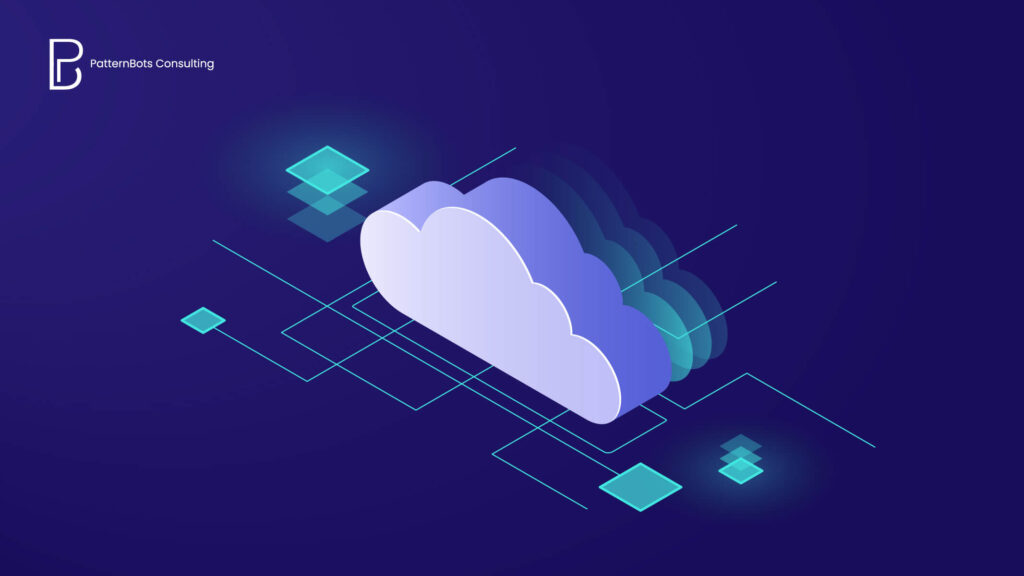
Cloud-based platforms have been taking the software industry by storm. Thanks to the development of cloud technology, almost all businesses have been migrating their data from on-premises servers to the cloud. A report published by globenewswire.com in April 2023 stated that the global cloud migration services market exponentially grew from $171.69 Billion in 2022 to $209.81 Billion in 2023 at a CAGR of 22.2%. This market may grow to $462.11 Billion in 2027 at a CAGR of 21.8%. Let’s cover the basics before we learn about cloud migration challenges.
In this blog, we’ll be briefing you on what cloud migration is, its benefits, and best practices. Our major focus will be on common cloud migration challenges and solutions for businesses today.
What is Cloud Migration?

Cloud migration is the process of migrating a company’s database, digital assets, services, and applications to the cloud. This migration is doable, either partially or entirely, from on-premises to the cloud or from one cloud platform to another.
Key Benefits of Cloud Migration
The following are ten cloud migration benefits for businesses:
- Businesses can quickly scale their resources up or down based on needs without infrastructure limitations.
- Cloud migration reduces upfront capital expenses and allows for the optimization of operational costs.
- By enabling quick deployment and testing of new applications or services, cloud migration enhances the adaptability of businesses to market demands, allowing them to respond faster.
- Businesses can take advantage of the security measures offered by cloud service providers, such as data encryption and access controls, to ensure their data protection when transitioning to the cloud.
- With seamless access to data and applications from any location, team collaboration is enhanced, allowing for smooth and efficient collaboration among team members.
- By ensuring high availability and implementing service level agreements (SLAs), businesses can minimize downtime and provide uninterrupted access to their data and applications.
- During cloud migration, businesses can rely on cloud providers to handle regular software updates and security patches, ensuring that their systems remain up-to-date.
- Migrating data to the cloud provides built-in backup and recovery mechanisms that enable quick data restoration during failures or disasters.
- By minimizing the need for physical servers and data centers, cloud migration helps reduce business’’ carbon footprint.
- Businesses that migrate gain access to powerful infrastructure resources and advanced technologies, resulting in improved performance and scalability capabilities.
Cloud Migration Challenges and Solutions

Now that we have covered the definition and benefits of cloud migration, let’s learn about the six challenges and solutions for cloud migration:
- Compatibility Challenge
- Uncertain cost of the cloud migration process
- Choosing Cloud Services
- Avoiding Vendor Lock-in
- Maintaining Data Security & Risk Assessment
- DevOps transformation on top of cloud migration
Cloud Migration Challenge #1 – Compatibility
Though migrating data to the cloud is as easy as ‘lift and shift,’ two possible compatibility issues can occur. The first one could be that the person migrating the data may need to gain knowledge of cloud-based technologies, and the second cloud migration challenge includes shifting incompatible non-cloud apps to the cloud environment.
Cloud Migration Solution:
To address such compatibility challenges, you can use a three-phased approach to your cloud migration process –
- In Phase 1, You can shift those already compatible apps with the cloud.
- For Phase 2, You can align your virtual network to communicate with the on-premise infrastructure.
- In Phase 3, Re-architecture some applications while decommissioning the obsolete ones.
Cloud Migration Challenge #2 – Unpredictable Process Costs:
Cloud migration expenses can be a significant concern for businesses if they fail to estimate finances beforehand. Data migration costs, compatibility issues, skill demands, lack of data recovery plans, and migration strategy can contribute to these challenges.
Cloud Migration Solution:
Ensure thorough costing to avoid paying excessively. Patiently collaborate with your cloud service provider to determine migration expenses upfront before committing to a plan. Include infrastructure costs, migration expenses, financial risks from slow adoption, and post-migration training in the planned budget. More planning can pose a significant challenge when transitioning to the cloud.
Cloud Migration Challenge #3 – Choosing the Right Cloud Software Platform:
It is a crucial task when it comes to selecting the right cloud-migrating services that align with your business needs.
Cloud Migration Solution:
Thoroughly evaluate the different cloud service providers regarding data compatibility, Security and user experience. Remember the specific business requirements and future growth plans to select the cloud services that best align with the organization’s needs.
Cloud Migration Challenge #4 – Vendor Lock-in:
Vendor lock-in can be a major cloud migration challenge as regular updates and changes in rates of subscriptions can sometimes become costly, and you may need to re-migrate the entire database to another cloud platform. Thus, in this case, ensuring application and data portability is crucial.
Cloud Migration Solution:
To avoid vendor lock-in, adopt cloud-agnostic architectures and technologies that promote portability and interoperability between different cloud platforms. Use standards-based APIs to ensure compatibility across multiple cloud providers and design a multi-cloud or hybrid cloud strategy to distribute workloads.
Cloud Migration Challenge #5 – Cloud Migration Data Security & Risk Assessment:
Data security and risk are one of the major cloud migration issues faced by businesses. When migrating sensitive data, businesses face significant risks of data breaches. Data breaches can result in the unauthorized access, disclosure, or compromise of sensitive information, leading to severe financial, legal, and reputational consequences.
Cloud Migration Solution:
When migrating sensitive data to the cloud, organizations should prioritize security measures to mitigate risks. This includes
- employing encryption and secure communication protocols during data transit
- implementing strong security controls for data at rest, such as encryption and access controls
- establishing strict access controls and monitoring mechanisms to address insider threats
- following best practices and using automation tools to minimize misconfigurations
- assessing the security practices of the cloud provider, and ensuring compliance with relevant regulations.
By adopting these solutions, businesses can enhance the security of their sensitive data throughout the migration process and safeguard against potential data breaches.
Cloud Migration Challenge #6 Integrating Cloud Migration and DevOps
The challenge of DevOps transformation on top of cloud migration is effectively integrating DevOps practices and culture within the cloud environment. This includes addressing cultural shifts, selecting appropriate tooling and automation, developing necessary skills, and establishing streamlined continuous integration and deployment processes.
Cloud Migration Solution:
To overcome these cloud migration challenges, organizations should gain executive support for cultural transformation, carefully select and integrate DevOps tools compatible with the cloud platform, invest in skills development and training, implement Agile practices and CI/CD pipelines, and foster collaboration and communication among teams involved in the cloud migration and DevOps transformation.
Best Cloud Migration Practices

It is crucial that you feel confident about migrating your digital business assets to the cloud platform. In most cases, cloud computing initiatives tend to backfire either by stalling or by underperforming applications to the extent that they would be required to be migrated back to on-premises software.
Establishing a baseline before transitioning to the cloud and measuring the same metrics after the transition can help mitigate risks and evaluate the success of a cloud deployment initiative. This approach is crucial as even successful cloud migration strategies can face challenges such as a limited understanding of the original computing system and application incompatibility.
By following this approach, it provides clear insights into the impact of the transition and enables effective risk management.
Following are some cloud migration practices we suggest you follow:
- Create a fool-proof plan for cloud migration.
- Monitor application performance.
- Authenticate cloud security for migrating sensitive data.
- Ensure all your business assets are compliant with the selected cloud platform.
- KPIs should be decided before taking the initiative to know if the cloud solution has improved things or affected the overall experience.
- Performing benchmarks early in the cloud migration timeline can improve incident context and expedite the troubleshooting process.
- Transform monitoring workflows into code with a concise approach.
PatternBots – Your Cloud Migration Partner
If you’re considering migrating data from your current on-premises platform to the cloud or transferring it between different cloud platforms, PatternBots‘ expert team guarantees a meticulous handling of the ‘lift & shift’ process. With 15 years of active experience, our services have consistently delivered excellent results. If you require assistance with business data migration, we invite you to consult our experts at patternbot.com.
Conclusion
Whatever we choose to do, we will face challenges and come up with solutions at some point. The same is the case with cloud migration. We have mentioned six common cloud migration challenges and solutions in this blog. However, there are more challenges that will evolve with advancements in technology. It’s best to keep yourself updated with the latest developments and what cloud migration issues and solutions are available to you. Be sure to develop a smart plan for your business and strictly adhere to it. Following the best practices is the key to a successful cloud migration. Hope this blog was insightful for you. Do leave your feedback in the comments section.
Related Blogs –